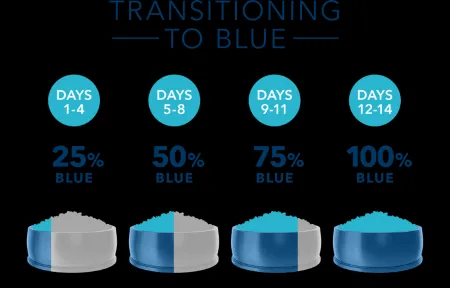Welcoming a new puppy into your home is an exciting time, filled with cuddles, playtime, and the crucial responsibility of providing the best possible start in life. One of the most important decisions you’ll make for your furry friend is choosing the right nutrition. For growing puppies, a diet rich in high-quality protein is paramount for healthy muscle development and overall vitality. This is where Blue Buffalo High Protein Dog Food steps in, offering a specialized formula designed to meet the unique needs of puppies. Understanding what goes into their Baby BLUE High-Protein recipe can help you make an informed choice for your new companion, ensuring they thrive from an early age. Before diving into specific dietary choices, it’s helpful to understand what foods are generally safe for your canine companion. what human food can you feed dogs
The Core of Quality: Understanding Blue Buffalo High-Protein Puppy Formula
The cornerstone of any superior puppy food lies in its ingredients. Blue Buffalo’s Baby BLUE High-Protein Chicken and Oatmeal Recipe is crafted with real chicken as the first ingredient, ensuring a robust foundation for muscle growth and repair. This formula goes beyond basic protein, incorporating a blend of wholesome ingredients chosen for their specific nutritional benefits, supporting everything from cognitive development to a healthy immune system.
Key ingredients found in this premium puppy food include:
- Chicken: A high-quality protein source essential for supporting strong muscle development in rapidly growing puppies.
- Fish Oil: Rich in omega-3 fatty acids and DHA, crucial for supporting natural skin and coat health, improving cognitive functions, and aiding in healthy weight management.
- Carrots: An excellent natural source of beta carotene, fiber, vitamin K1, potassium, and beneficial antioxidants.
- Blueberries: Packed with vitamins C & E, potassium, and fiber, these berries contribute to antioxidant enrichment, bolstering your puppy’s defenses.
- Menhaden Fish Meal: Another vital protein source that further supports muscle development and provides sustained energy for active puppies.
- Flaxseed: A rich source of essential omega-3 fatty acids and fiber, promoting digestive health and contributing to a lustrous coat.
- Chicken Meal: An incredibly dense protein source that provides supplemental energy and nutrients, aiding in optimal digestion.
- Sweet Potatoes: Offering an excellent supply of potassium, B vitamins, beta carotene, phytochemicals, and carotenoids, these are powerful antioxidants that help fortify the immune system.
These carefully selected components work synergistically to provide comprehensive nutrition, laying the groundwork for a healthy and active life. Knowing what beneficial ingredients are included can also help you understand why certain foods should be avoided. For more on what to steer clear of, consult our list of what dogs cant eat.
 Blue Buffalo Baby BLUE High-Protein Puppy dry food bag
Blue Buffalo Baby BLUE High-Protein Puppy dry food bag
LifeSource Bits: A Nutritional Advantage
What truly sets Blue Buffalo high protein dog food apart is the inclusion of their exclusive LifeSource Bits™. These small, dark kibbles are a precise blend of antioxidants, vitamins, and minerals. Developed by veterinarians and animal nutritionists, LifeSource Bits are specifically designed to support the immune system, meet life stage requirements, and maintain a healthy oxidative balance in your puppy.
A key innovation behind LifeSource Bits is their cold-forming process. This method minimizes exposure to high heat during manufacturing, much like how cooking vegetables at high temperatures can reduce their nutrient content. By preserving the potency of heat-sensitive ingredients, LifeSource Bits ensure your puppy receives the maximum benefit from these vital nutrients, contributing to their overall health and well-being. This commitment to nutritional integrity highlights Blue Buffalo’s dedication to providing superior puppy food.
 Blue Buffalo LifeSource Bits diagram with antioxidants, vitamins, and minerals
Blue Buffalo LifeSource Bits diagram with antioxidants, vitamins, and minerals
The True BLUE Promise: What Sets Blue Buffalo Apart
Blue Buffalo stands by its “True BLUE Promise,” a commitment to using only the finest natural ingredients and avoiding common components that can be detrimental to a puppy’s health. This promise ensures that when you choose Blue Buffalo high protein dog food, you are providing a meal free from undesirable additives.
The True BLUE Promise guarantees:
- Real Deboned Chicken as the First Ingredient: Emphasizing high-quality, whole protein.
- NO Chicken (or Poultry) By-Product Meals: Avoiding rendered animal parts that can be less nutritious.
- NO Corn, Wheat, or Soy: Eliminating common allergens and fillers that offer little nutritional value to dogs.
- NO Artificial Flavors or Preservatives: Ensuring a natural and wholesome diet.
This stringent adherence to natural ingredients and avoidance of artificial components underscores Blue Buffalo’s dedication to quality and supports the healthy growth and development of your puppy. Understanding these ingredient standards can also extend to what you might or might not share from your own plate with your dog. For further reading, explore what human can dogs not eat.
 Blue Buffalo True BLUE Promise shields highlighting key product features
Blue Buffalo True BLUE Promise shields highlighting key product features
Essential Feeding Guidelines for Your Growing Puppy
Proper feeding is critical for a puppy’s development. The Blue Buffalo Baby BLUE High-Protein formula comes with comprehensive feeding guidelines tailored to your puppy’s age and weight, ensuring they receive the appropriate amount of calories and nutrients for optimal growth. For instance, puppies up to 5 lbs typically require ½ to 1 cup per day during their first three months, with adjustments as they grow.
It’s important to remember that individual puppy requirements can vary based on age, breed, environment, and activity level. Always adjust food amounts as needed to maintain optimal body condition, and consult your veterinarian if you are unsure. Until six months old, puppies should be fed three meals per day, transitioning to two meals daily from six to twelve months. When transitioning to Blue Buffalo, gradually mix increasing proportions of the new food with your puppy’s old food over 14 days. Whether served dry or with warm water to release flavors, always ensure a clean bowl of cool, fresh water is available at all times. For a broader perspective on canine nutrition, including how it compares to feline diets, consider reading what do cats and dogs eat.
 Blue Buffalo feeding guidelines chart for puppies
Blue Buffalo feeding guidelines chart for puppies
Decoding the Nutrition: Guaranteed Analysis of Blue Buffalo High Protein Puppy Food
The Guaranteed Analysis provides a transparent look at the nutritional content of Blue Buffalo high protein dog food. This formula meets the nutritional levels established by the AAFCO Dog Food Nutrient Profiles for growth, specifically for puppies, excluding large-sized dogs expected to weigh 70 lbs or more as adults.
Key nutritional guarantees include:
| Ingredient | Percentage |
|---|---|
| Crude Protein | 36.0% min |
| Crude Fat | 16.0% min |
| Crude Fiber | 5.0% max |
| Moisture | 10.0% max |
| DHA | 0.15% min |
| Calcium | 1.2% min |
| Phosphorus | 1.0% min |
| Choline | 2,750 mg/kg min |
| ARA* | 0.05% min |
| Omega 3 Fatty Acids* | 1.0% min |
| Omega 6 Fatty Acids* | 2.75% min |
*Not recognized as an essential nutrient by the AAFCO Dog Food Nutrient Profiles.
This detailed analysis confirms the high protein content and the presence of essential fatty acids like DHA and Omega-3s, which are vital for a puppy’s brain and vision development, as well as skin and coat health. The balanced mineral content, including calcium and phosphorus, supports strong bone growth.
Investing in Your Puppy’s Future with Blue Buffalo
Choosing Blue Buffalo high protein dog food for your puppy is an investment in their long-term health and happiness. The Baby BLUE High-Protein With Grains Healthy Growth Formula with Savory Chicken for Puppies offers a carefully crafted diet designed to support every stage of your puppy’s development, from muscle growth to cognitive function and immune health. By combining real, natural ingredients with scientifically formulated LifeSource Bits and adhering to the True BLUE Promise, Blue Buffalo provides a nutritious and reliable option for discerning pet parents. Always remember to consult your veterinarian for personalized dietary advice, ensuring your puppy receives the best possible care throughout their growth journey. For those curious about other dietary considerations, understanding the safety of various treats and supplements like what raw bones can dogs have can further enhance your puppy care knowledge.
